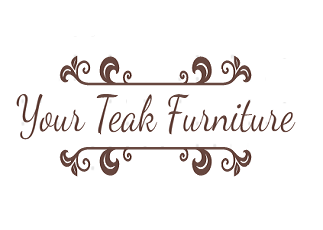We talk about the advantages and disadvantages of modern varieties of flooring: tiles, laminate, engineering, parquet boards, and others. Choosing a floor finish is not easy. But this must be done correctly, otherwise, it will be uncomfortable to live in the house. The new floor should not only be beautiful, but also strong, safe, and durable. Well, if it will be easy to care for him. To make it easier to make a choice, we will analyze the advantages and disadvantages of different types of flooring for an apartment. If you need to earn money fast, try casino real money.
Contemporary decorative floor finishes
The choice of finishing floor finishes is very large. They are laid “solo” or two or even three materials are combined. It turns out beautiful and functional. Consider the pros and cons of modern flooring to figure out which one is best for your home.
- Laminate
The undoubted leader in demand among other materials. Laminate is a multi-layer cladding with a core of the high-pressure pressed wood board. On both sides, it is covered with protective layers of polymer. Under the top is a decorative layer. This is paper with a pattern printed on it that imitates a variety of materials: wood, stone, and fabric. The top layer of the laminate can be smooth or embossed.
Lamellas are mounted using a locking connection. They are inserted one into the other and snap into place. Laying is most often carried out according to the type of “floating” floor. Varieties that are attached to glue exist, but are considered obsolete, and are very rare.
- Parquet
Premium quality plating. Made only from natural wood. The upper part of the slats is veneer from valuable species. He determines the pattern on the wooden planks. The parquet is laid piece by piece on a special glue. Some models are sold partially assembled in the form of small modules-blocks. They are easier to install. The layout of parquet planks can be different: straight, diagonal, herringbone, ladder, etc.
- Parquet board
Something between parquet and laminate. Like the first, it is a completely natural material. Like the second one, there is layering and locking. The bottom layer of parquet lamellas is made of plywood, the next layer consists of cross-laid planks. They are covered with valuable wood veneer. It is he who determines the appearance of the coating. To emphasize the structure, the veneer is treated with stains and impregnations. A protective layer is applied on top.
- Engineering board
Refers to new types of flooring, is considered a competitor to parquet boards. The appearance of an engineer, as the masters call her, is similar to piece parquet. But that’s where the similarity ends. This is a multilayer material with a base of two or three layers of plywood. The fibers in them are located perpendicular to each other, which makes the board resistant to any deformation and allows it to be laid in wet rooms. This distinguishes it favorably from parquet boards.
- Ceramic tiles
Piece facing from baked clay. There are many varieties of ceramics: tiles, porcelain stoneware, majolica, clinker, etc. All have floor models. If earlier tiles were laid most often in bathrooms or bathrooms, now they are laying them in any rooms. Therefore, it can be considered one of the best floor coverings for an apartment if it is intended to lay a single finish everywhere.
- Marmoleum
It is considered a novelty in the market of finishing materials, but this is not entirely true. A coating with the same name and similar properties appeared in the century before last. It became the “progenitor” of the well-known linoleum. Modern marmoleum is completely natural. It contains resins, ground wood and lime, linseed oil. Coloring pigments are also only natural. This mass is applied to a fabric, and more often a jute base and pressed. A durable wear-resistant coating is obtained. It is produced in the form of tiles, panels or rolled strips. Mounted on glue or mastic on a rigid base.
- Carpet
A very carpet-like floor covering for a room. The difference is that the carpet covers the entire floor. It is most often monophonic or with a small repeating pattern. Depending on the composition of the raw materials, the material can be natural, synthetic or mixed. It is also distinguished by the length of the pile. There are lint-free, short-nap and long-nap products. Carpet is placed on a hard, even base. It is attached with glue, double-sided tape, or simply pressed to the base with skirting boards.
- Quartz vinyl tiles
This type of flooring refers to modular flooring. It is made from PVC. In addition, the composition of the material includes quartz sand, which gives the tile increased strength. Modules are produced with and without locks. The first are mounted in a floating way, the second – with glue. Lock-type planks are thicker and stronger. They better imitate wood or stone. The slats are thin, similar to chopped linoleum.
- Bulk floor
A polymer monolithic coating, which is also called a liquid floor. According to the composition of the main components, it can be epoxy, polyurethane, methyl methacrylate, cement-acrylic. After hardening, the bulk mastic forms a monolithic surface. It closes small cracks and crevices, levels small height differences. For a decorative effect, paint, slices, glitter are used, drawings are applied.
- Cork
Made from crushed cork tree bark. They are produced in the form of plates or rolled strips. Like any other natural material, cork finish has a unique pattern. The cladding is mounted on glue on a leveled rigid base.
What kind of flooring to choose for the apartment
The choice of finishing for the floor determines not only its appearance and price. It is important to consider the conditions in which the material will be used. To make it easier to choose, we have compiled a table with a comparison of flooring and recommendations for their use.

